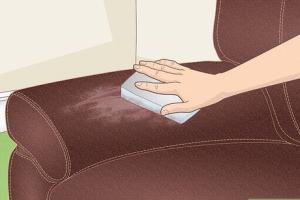Ultimate Guide to Repairing Faux Leather: Tips, Tricks & Techniques

-
Quick Links:
- Introduction
- Understanding Faux Leather
- Common Faux Leather Damage
- Repair Tools and Materials
- Step-by-Step Repair Guide
- Prevention Tips for Faux Leather
- Case Studies
- Expert Insights
- FAQs
Introduction
Faux leather is a popular choice for furniture, clothing, and accessories due to its affordability and versatility. However, like any material, it can sustain damage over time. Whether it’s a tear in your favorite faux leather jacket or scuffs on your furniture, knowing how to repair faux leather can save you money and extend the life of your items. In this guide, we will explore various methods for repairing faux leather, ensuring that you can bring your cherished items back to life.
Understanding Faux Leather
Faux leather, also known as synthetic leather or vegan leather, is made from plastic-based materials. The most common types include polyurethane (PU) and polyvinyl chloride (PVC). Unlike genuine leather, faux leather is more affordable, easier to clean, and often more environmentally friendly. However, it is also less durable and can be susceptible to damage from wear and tear.
Common Faux Leather Damage
Understanding the types of damage that can occur to faux leather is the first step to effective repair. Here are some common issues:
- Tears and Cuts: These can happen due to sharp objects or excessive tension.
- Peeling: Often caused by aging or low-quality faux leather.
- Stains: Faux leather can absorb dyes and oils, leading to unsightly marks.
- Cracking: Occurs when the material becomes too dry.
Repair Tools and Materials
Before you start the repair process, gather the following tools and materials:
- Faux leather repair kit
- Scissors
- Clean cloth
- Leather conditioner
- Adhesive (if needed)
- Paint or dye that matches the faux leather color
Step-by-Step Repair Guide
Here’s a detailed guide to help you repair common faux leather damages:
Tears and Cuts
- Clean the area around the tear with a damp cloth.
- Apply adhesive to one side of the tear and gently press the edges together.
- Place a patch over the tear if it’s large, ensuring it matches the color of the faux leather.
- Allow to dry according to the adhesive instructions.
Peeling Faux Leather
- Trim away any loose edges of the peeling area.
- Apply adhesive underneath the peeling layer and press down firmly.
- Use a color-matching paint to touch up the repaired area.
Stains
- Use a clean, damp cloth to gently blot the stain. Avoid rubbing.
- For tougher stains, apply a small amount of soap solution.
- Rinse with a damp cloth and dry the area thoroughly.
Cracks
- Clean the cracked area to remove any dirt.
- Apply a leather conditioner to restore moisture.
- Use a color-matching dye to fill in the cracks.
Prevention Tips for Faux Leather
Taking care of your faux leather can help prevent damage. Here are some tips:
- Avoid exposing faux leather to direct sunlight for prolonged periods.
- Regularly clean and condition the material to maintain its suppleness.
- Store faux leather items in a cool, dry place.
Case Studies
Let’s take a look at some real-world examples of faux leather repairs:
Case Study 1: The Faux Leather Couch
A family noticed peeling on their faux leather couch after three years. They followed the repair steps and used a patch kit, successfully restoring their couch’s appearance.
Case Study 2: The Jacket
A woman found a small tear in her faux leather jacket. Using adhesive and a patch, she was able to repair it, avoiding the cost of a new jacket.
Expert Insights
We consulted with several experts in home improvement and faux leather care:
"Faux leather can last a long time if properly maintained. Regular cleaning and conditioning can prevent many issues." – Home Decor Expert
FAQs
1. Can you repair faux leather?
Yes, faux leather can be repaired using specialized kits or DIY methods.
2. What is the best adhesive for faux leather?
A strong fabric adhesive or a specific faux leather adhesive is recommended.
3. How do I prevent faux leather from peeling?
Conditioning the material regularly can help prevent peeling.
4. Can I paint over faux leather?
Yes, you can use leather paint to touch up or change the color of faux leather.
5. How do I clean faux leather?
Use a damp cloth with mild soap for cleaning. Avoid harsh chemicals.
6. Is faux leather waterproof?
Faux leather is generally water-resistant but not entirely waterproof.
7. How long does faux leather last?
With proper care, faux leather can last several years.
8. Can I use regular leather conditioner on faux leather?
No, use a conditioner specifically designed for faux leather.
9. How do I fix a tear in faux leather?
Use adhesive and, if necessary, a patch to repair tears.
10. Is faux leather eco-friendly?
While it is synthetic, some types of faux leather are designed to be more environmentally friendly than traditional leather.
By following the steps outlined in this guide, you can successfully repair and maintain your faux leather items, keeping them looking great for years to come. For more information, check out these authoritative sources on faux leather care and maintenance:
Random Reads